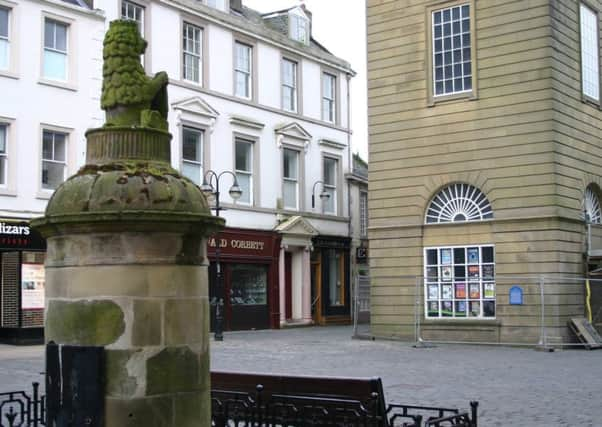Grisly spectacle of the last public execution in Falkirk


In particular we were interested in the area in front of the steeple, the ‘‘cross’’ or market place of the old burgh, where all kinds of activities were carried on from the 16th century.
The mercat cross was there as well as the public tron or weighing machine and the cross well.
Advertisement
Hide AdAdvertisement
Hide AdWe know that public punishment was also carried out here and that the last man executed in the town climbed the gallows steps as late as 1828.
But what about the years before this? We certainly know that people were regularly put to death though exactly where is uncertain.
Tradition says that back in the 14th and 15th centuries the Livingstons of Callendar had the “power of pit and gallows” and that in front of Callendar House stood the ‘‘dule tree’’ on which those who committed various crimes met their end.
In 1663 a new tolbooth was built in the centre of the High Street and the first steeple on the site was added In 1697.
Advertisement
Hide AdAdvertisement
Hide AdJust a year later Margaret Mitchell was found guilty by the court of child murder and was ordered to be “taken upon Thursday the 23rd day of June to the ordinar place of executione and there betwixt the hours of two and four in the afternoon to be hanged till she die”.
It seems likely to me that the gallows would by then have been located below the steeple where the public would gather to witness ‘‘justice’’ being done.
How many more followed Margaret we don’t know but there is some evidence that in the 18th century executions were carried out at the ‘‘Claydens’’ near where the Cladhan Hotel stands today.
Unfortunately, we don’t have any record of the names, dates or crimes until much later which brings us back to the High Street and that last example of public execution.
Advertisement
Hide AdAdvertisement
Hide AdThe condemned man was Francis Cockburn, a nailer from Camelon.
This case concerned an argument involving one of the famous Burt family.
In June 1827 Cockburn was accused by William Burt of spreading rumours that he had been having an affair behind his wife’s back.
Tension between the pair increased in the following weeks culminating in an assault on September 1 when Burt, having had a few drinks, attacked Cockburn and others.
Advertisement
Hide AdAdvertisement
Hide AdLater the same day the two clashed in the street and this time it was Cockburn who wielded a weapon which felled Burt and resulted in his eye being knocked out.
Cockburn was arrested and Burt lingered on for a couple of days before dying on September 4.
The murder trial took place in Stirling in April 1828 and Cockburn was found guilty and ordered to be taken to Falkirk “and there to be hanged by the neck by the hands of the common hangman upon a gibbet until he be dead and his body to be delivered to Doctor Alexander Munro . . . to be dissected.”
The scaffold was erected at the steeple on May 8 and the condemned man, having prayed with a local minister and admitted “it was bad company brought me to this”, asked that the Sheriff write to his mother to tell her how he had behaved and that he had “died in peace with all men”.
At 2.25pm he gave the signal and met his end.
By four o’clock the gallows had been removed and were never seen in the town again.